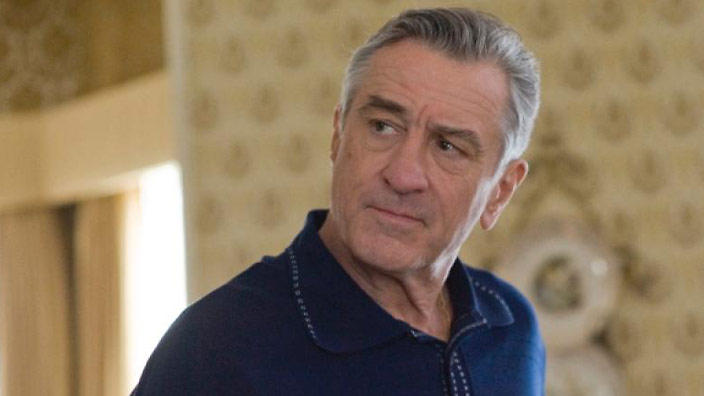Robert De Niro’s love for acting wasn’t born on a big stage or movie set — it started in the neighborhoods of New York City. Raised in Manhattan’s Little Italy, De Niro grew up surrounded by a mixture of artistic influences. His father, Robert De Niro Sr., was a well-known painter, and his mother, Virginia Admiral, was a poet and painter. Although neither parent was an actor, the creativity they nurtured at home set a foundation for De Niro’s exploration of the arts.
In interviews, De Niro has credited his upbringing for igniting his passion. “I was surrounded by creativity, even though I wasn’t sure where I belonged in it at first,” he once said. However, it wasn’t until his teenage years that he seriously pursued acting — and he didn’t do it alone.
De Niro’s first taste of formal training came at the Dramatic Workshop in New York, under the renowned acting teacher Stella Adler. He briefly studied there during his youth, and Adler’s influence planted the seeds of a performance philosophy he would carry throughout his career.
Stella Adler taught a form of acting derived from Stanislavski’s system but emphasized imagination over emotional memory. She often told students, “You have to live in the circumstances you create.” De Niro absorbed this deeply, as seen in his ability to completely transform into his roles — from the dangerously volatile Travis Bickle in Taxi Driver to the warm-hearted Vito Corleone in The Godfather Part II.
Adler, known for her commanding presence and lofty expectations, left a lasting impact on the young actor. Years later, De Niro would recall:
“Stella had a sense of grandeur about acting. She wanted us to respect the art.”
While Stella Adler was instrumental early on, Robert De Niro’s association with Lee Strasberg and the Actors Studio truly marked his transformation into one of the most meticulous performers of his generation.
Lee Strasberg was famous for promoting “The Method” — an acting technique that encouraged performers to draw on personal memories and emotions to fuel their characterizations. At the Actors Studio, De Niro studied intensely, participating in workshops and immersing himself in the emotionally demanding training that Strasberg advocated.
De Niro has said:
“Lee helped me understand that acting wasn’t just pretending. It was about finding the real emotions and making them live in the moment.”
His performances began to reflect a new level of authenticity. De Niro wasn’t merely acting anymore — he became the characters. To prepare for Taxi Driver, he famously worked 12-hour shifts driving a cab around New York City. For Raging Bull, he gained over 60 pounds to portray an aging Jake LaMotta.
Strasberg himself acknowledged De Niro’s dedication, stating:
“De Niro is a master. He has the capacity to surprise even the people who think they know what to expect.”
While mentors like Adler and Strasberg were pivotal, Robert De Niro’s personal commitment to his craft also acted as an internal “teacher.” His deep research and preparation for every role became legendary in Hollywood.
For The Godfather Part II, De Niro spent four months in Sicily learning the Sicilian dialect and culture to portray the young Vito Corleone authentically. His performance earned him an Academy Award for Best Supporting Actor.
Martin Scorsese, who directed De Niro in several films, remarked:
“With Bob, every small gesture, every silence, is deliberate and alive. He studies, he prepares, but when the camera rolls, he lives.”
De Niro’s internal drive pushed him far beyond traditional lessons, showing that while teachers provide the tools, it is the student’s own commitment that forges a legend.
Besides formal education, De Niro learned a lot from working with other actors and directors. Collaborating with giants like Al Pacino, Harvey Keitel, and Scorsese refined his skills.
In Heat (1995), where he shared screen time with Pacino for the first time, De Niro said the experience was like “two boxers meeting in the center of the ring.”
Pacino also praised De Niro, saying:
“Working with Bobby is a lesson in itself. He listens so carefully, it makes you listen harder too.”
Their dynamic scenes in Heat became legendary, an acting masterclass captured on film — proof that constant interaction with other skilled performers became part of De Niro’s extended education.
Today, De Niro’s acting legacy stands as a monument to his mentors’ teachings, his internal discipline, and the influences of his talented peers. He frequently speaks about the debt he owes to his early teachers.
In 2014, when De Niro delivered a commencement speech at New York University’s Tisch School of the Arts, he offered a piece of advice that reflected his own journey:
“You’re not just artists; you’re warriors. Take your hits, learn your lessons, and keep moving.”
The impact of Stella Adler’s grandeur, Lee Strasberg’s emotional depth, and De Niro’s own relentless pursuit of authenticity forged one of the greatest actors in cinematic history.




